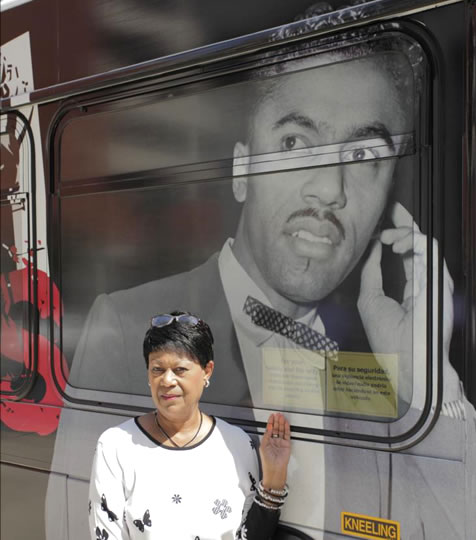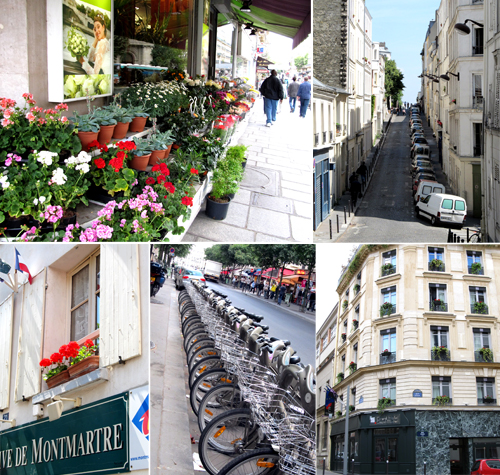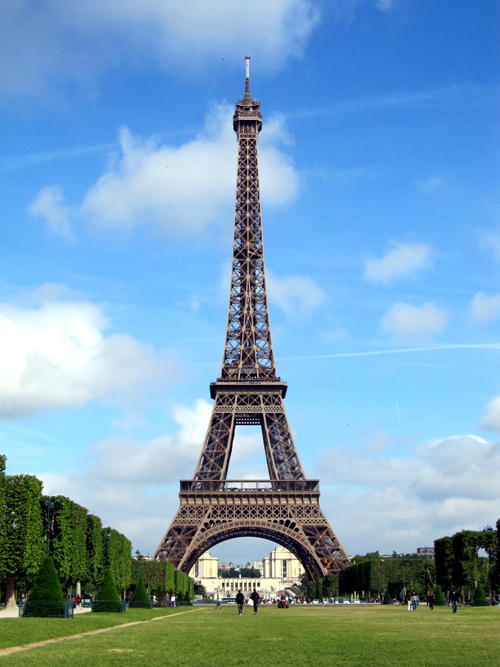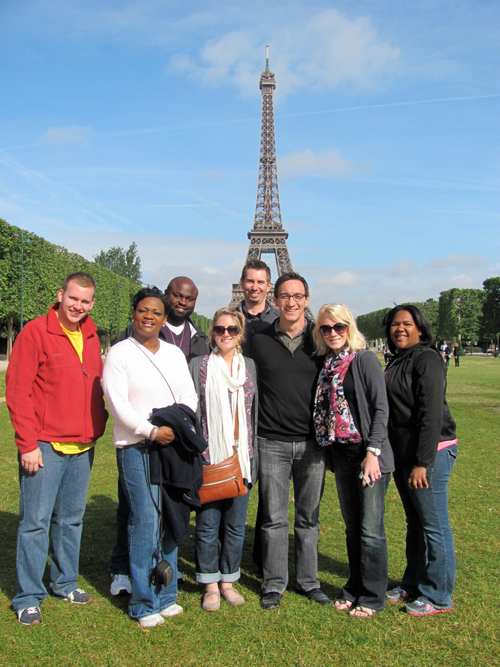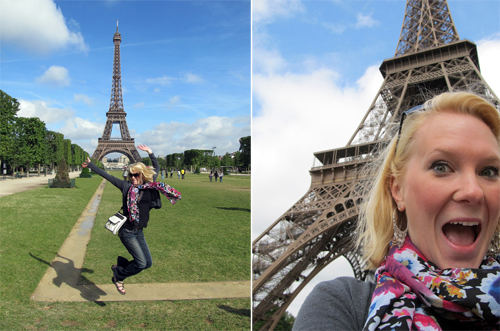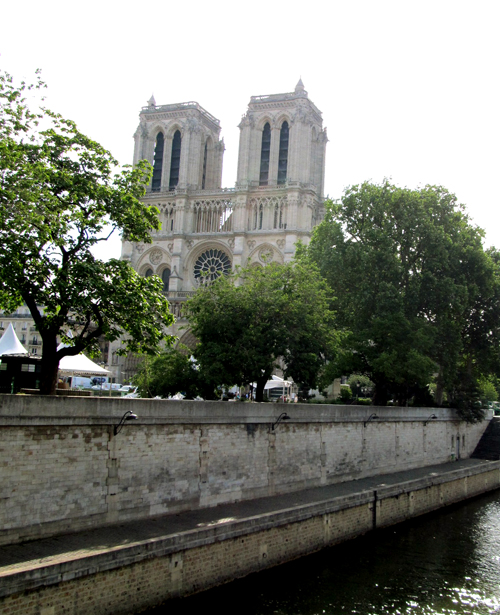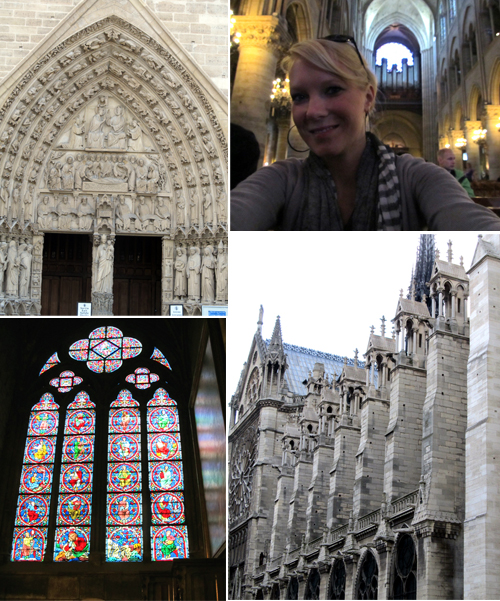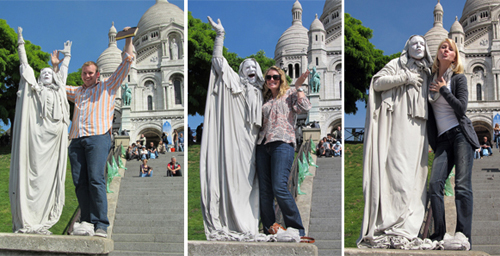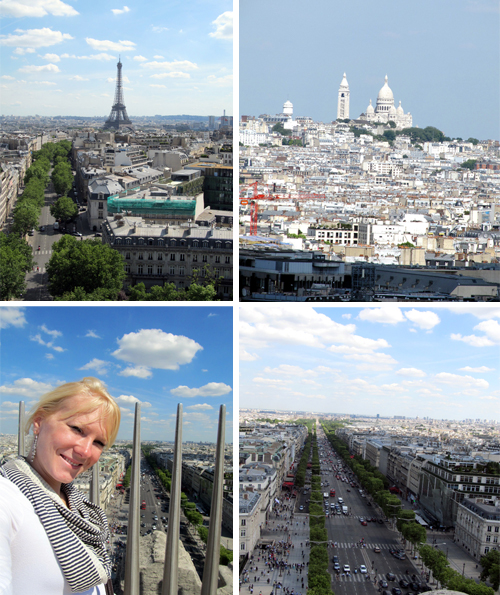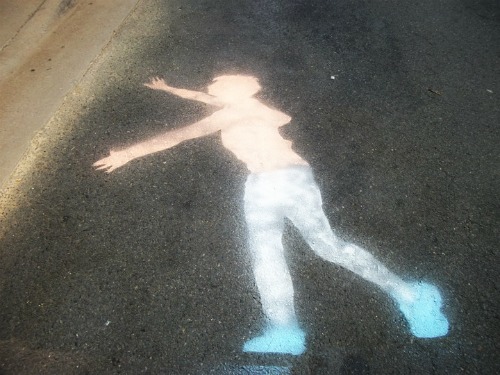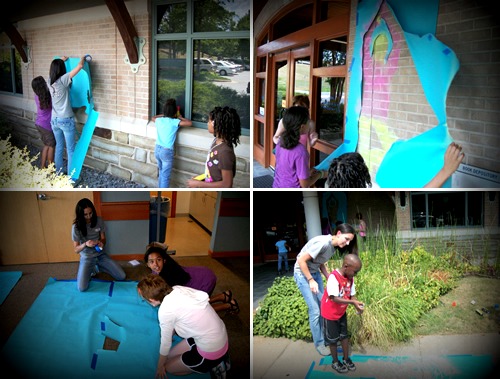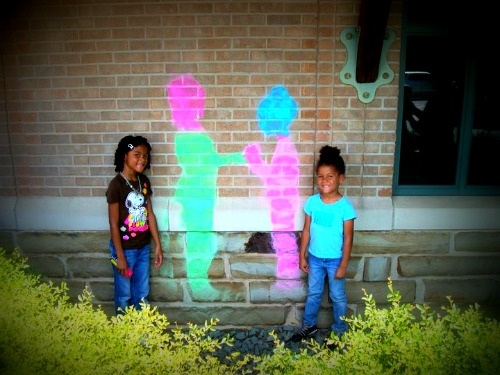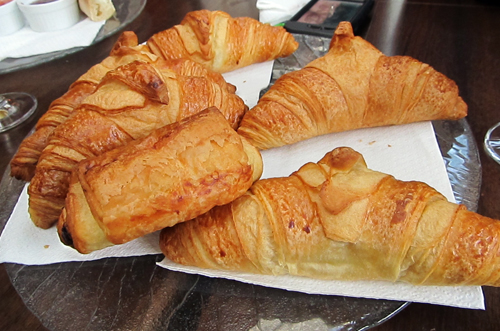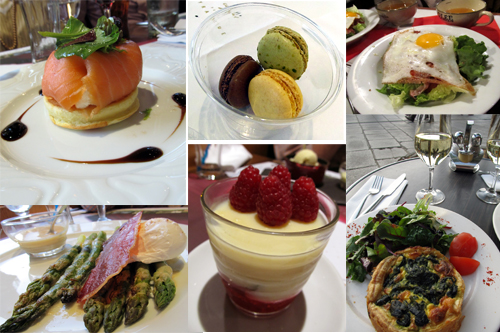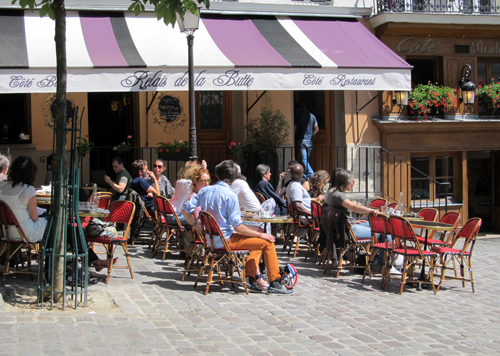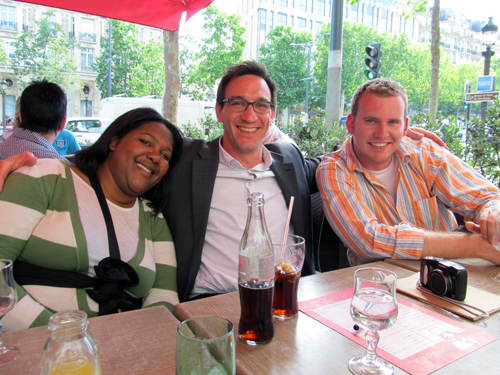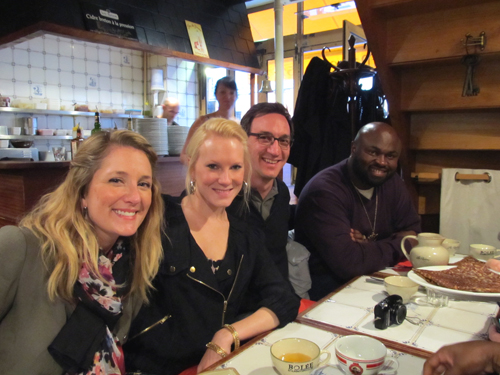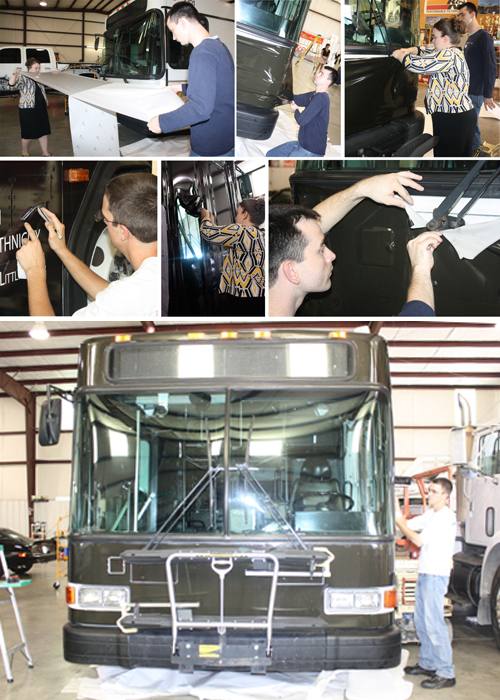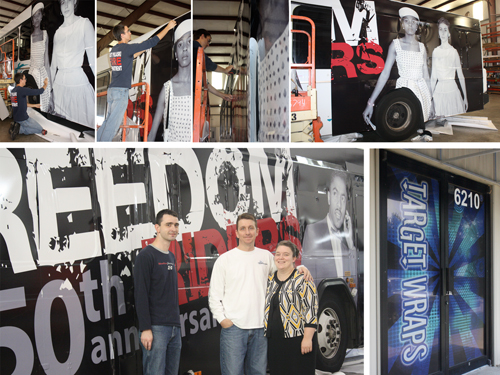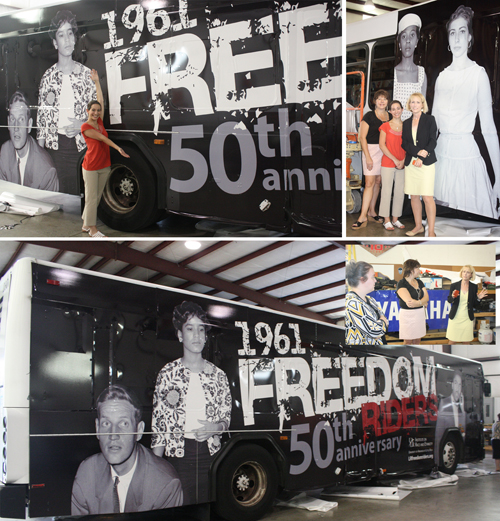In just a few days, students will begin moving in to the residence halls. It’s a rite of passage for many — an exciting transition for freshmen and a homecoming of sorts for those returning.
We talked to some residents at the end of the spring semester to find out what they enjoy most about living on campus. The resounding answer? It’s all about forming a tight-knit community and forging friendships that can last a lifetime.
And this year, our newest building, West Hall, will open its doors for the first time. I don’t know about you, but dorm life was not like this when I was in college. It’s fancy!
Want to see more behind-the-scenes photos from the video shoot? Read Meaghan’s blog post North, South, East, West — Which Hall Do You Want To Live In? Are you moving in this weekend? Tell us what you’re most excited about. Add a comment below, post to our Facebook page, or tweet using the #UALRMoveInDay hashtag.
UALR Department of Health Sciences was awarded a grant earlier this year that allowed them to literally plant some seeds in the University District. Thirty households in Broadmoor, Fair Park, Oak Forest, and College Terrace were chosen to receive raised bed gardens, complete with tools and plants, and an initial training session to get them started.
The idea behind the “Growing Healthy Communities” grant is two-fold. The actual process of growing your own food means better nutrition and physical exercise. The secondary benefit is economic. After all, produce at the grocery store is more expensive and can be a reason why folks choose packaged foods over fresh foods.
Beth Phelps from the University of Arkansas Cooperative Extension conducted the training to an eager group of hopeful green thumbs.
After the mandatory training, volunteers came out to each of the homes and installed the garden frame. A few days later, a pile of compost was delivered along with our first group of starter vegetable plants. Then the real work began in an attempt to keep these plants alive!
Honestly, with the record-breaking heat wave, I personally haven’t harvested much fruit at all. And that’s really OK. For me, this wasn’t a means to an end, but acceptance of a gardening learning curve and a stronger link to my own community. The outcome brought neighbors closer together — some even talked about joining their respective neighborhood associations as a result. So, in the end, you could argue that solidifying a network of residents is a fundamental element to a healthy community.
Janea Snyder, one of the project coordinators and an instructor in the Department of Health Sciences, was more than satisfied with the results. “Being able to provide residents with their very own raised bed garden was a joy to be a part of. The residents’ feedback to me has truly made my heart smile. I hope we can soon expand the effort.”
If you were one of the thirty households chosen, we’d love to hear from you. You can post a comment below, or send photos to saerwin@ualr.edu. If we have enough interest, we’ll create a Facebook page to share ideas and produce!
Children instructed by college faculty? Yes. The Summer Arts Camp (one in July, and one in August) is a special way to expose kids to various forms of the arts.
In another video, we take a more indepth look at the summer program, with insights from Leslie Mangiamele, Director of the UALR Community School of the Arts:
In addition to summer programs, the Community School offers year-round programs for all ages. Learn more at https://ualr.edu/communityschool.
Normally it takes about a year to plan a major event like Freedom Riders. We had two months and two weeks from start to finish, arranging travel and accommodations for dignitaries (some from as far away as Nigeria), designing and populating a website, arranging for staging and sound, wrapping a bus, catering, printing, advertising, installing sidewalk markers, ordering port-a-potties, you name it.
We could have gotten lost in all those details and bemoaned the hurdles we faced along the way, but everyday we were reminded of the five brave individuals we were honoring – what they dealt with 50 years ago on a hot day in July as they were arrested while seeking to integrate bus terminals across the South.
We had hoped that they could all attend the ceremony. Three of the riders were relatively easy to find. Janet Reinitz is still very much involved in social activism as a muralist in New York. Reinitz spoke to History Chair John Kirk a few days before the event and shared one of her fond memories despite the chaos – inside their jail cell, Bliss Ann Malone, a fellow Freedom Rider, taught her how to do the Twist.
Unfortunately, Reinitz was unable to attend because of a pre-arranged trip to Ghana to design a community mural, but you can view an on-camera interview she did 10 years ago for the 40th Anniversary where she tells their story with vivid detail.
John Curtis Raines is now professor emeritus at Temple University. He hadn’t been back to Little Rock since he was arrested here in 1961, so he was grateful for the opportunity to visit again under vastly different circumstances. In this interview with Craig O’Neill on KTHV, he describes what it was like 50 years ago.
Two of the riders, Malone and Annie Lumpkin proved impossible to find ….so impossible even Oprah Winfrey couldn’t track them down for her Freedom Riders show. We used Oprah’s contact information and didn’t get any further than her researchers did. We also used contacts with the Missouri History Museum, a ward alderman for Bliss Ann’s last known address, the New York CORE office and assorted internet sites. We were able to trace Bliss Ann up until the year 2000, but could never find Annie.
And then there was the veteran leader of the Little Rock riders, Benjamin Elton Cox. When we located him, we found out Rev. Cox had had a stroke and was not expected to live much longer. Sadly, he passed away June 12, less than a month before the Freedom Riders’ 50th Anniversary.
His widow Edna Cox, their daughter, and Rev. Cox’s brother attended the ceremony on his behalf. That led to one of the most moving events of the weekend. On the morning of the anniversary event, the dignitaries were to ride the Freedom Riders bus to a brunch at the Clinton Library. When Mrs. Cox saw the bus with her husband’s photo prominently displayed, there were not many dry eyes to be found. Her presence made the event even more special to all of us working behind the scenes.
It is easy to think that the city the Freedom Riders arrived in 50 years ago doesn’t exist anymore. That the kind of prejudice that separates us is a thing of the past thanks to the work that they and many others have done through the years to break down barriers. People don’t burn crosses in someone’s yard anymore, there is an African-American president, and we work and go to school together.
I grew up here and hearing how things used to be always sounds like they are talking about another city. I went to integrated schools. I never saw a “whites only” sign. That history seemed like a million years and a million miles away, which just shows how blind you can be when you want to be.
However, working on the committee gave me the chance to work with a young woman who reminded me that while we have come a long way, we still have a long way to go. This young lady, in her mid-twenties, was the backbone of the event committee. Whatever needed to be done, she usually had it done before being asked. She handled a million details with ease and to perfection. She was fun to work with – not a prima donna bone in her body – pretty, intelligent, kind, willing to help, uncomplaining.
It wasn’t until she told me a little of her story – about death threats against her family, about not being able to play outside at times when she was a child because of threats of violence, about having to hire police to guard their temple on High Holy Days because of bomb threats – that I realized prejudice is alive and thriving. I know she thought I had reverted to being a two-year-old when she was telling me her story. All I could say was, “Why?”
I’m still haunted by her story. Maybe the Arkansas the Freedom Riders saw is not in the distant past. Maybe we still have far to go, and the new Institute on Race and Ethnicity will help. John Raines shared with us his story, how they got on a bus 50 years ago on a path toward racial equality. But, he said, the road doesn’t end for as long as discrimination of any kind exists. His voice calls to us to get on board. It’s time for us all to get on the bus.
Visit the Little Rock Freedom Riders website for photos, video, and related stories.
Whether you’re a first-time freshman, a returning student, or a transfer student from another college, we have everything you need to know to make your plans for the fall semester.
Fall 2011 begins Aug. 18, but you must apply for admission by Aug. 17. The admission deadline for first-time freshmen is Aug. 8.

Downloads
Freshman Checklist
Transfer Checklist
Fall Pocket Guide
Undergraduate Catalog
Student Handbook
Early registration continues through Aug. 12. See the Registration Pocket Guide for important dates and deadlines.
Choose your courses
Start by viewing a current listing of courses offered during Fall 2011.
You can also use the “Class Schedule at Your Fingertips” to simplify your selection.
Get Advised Early
Undergraduate students must be advised before they can register for classes. For those new to the process, learn about advising here. There is also advising information for transfer students as well as advising information for continuing students.

Don’t forget about Welcome Week events. Make new friends during your first week on campus!
Financial Aid
Hopefully by now, you’ve already been there, done that. But if not, you still have time to make the final deadline for Financial Aid. Apply for aid here, and find key dates and policy info here. Veterans and dependents may be eligible for financial assistance from the GI Bill. Learn more about how UALR supports our student veterans.
Confirm the Term
The registration confirmation window opens July 18. By confirming, you are reserving your class selections and must satisfy payment of all charges not covered by financial aid. To confirm your registration, log into BOSS and select the Student Services tab, then select the Confirm Your Registration link.
Campus Life
Interested in joining a fraternity, sorority, or other student organization? Or do you just want to be in the know about upcoming events on campus? The Office of Campus Life keeps a calendar of fun activities year-round.
Additional Help
Have some questions or just want to talk to someone about your situation? Contact the UALR Office of Records & Registration at 501.569.3110.
If you missed part one of my study abroad trip to Paris, read “Experiencing Paris: One Croissant at a Time.”
When we weren’t stuffing our faces with fine French food, our group of seven students was enjoying the sights and soaking in as much as we could. It’s safe to say I walked more in that week than I probably have in my entire life. But it was the best way to see Paris. I loved simply walking the streets and noticing all the little details.
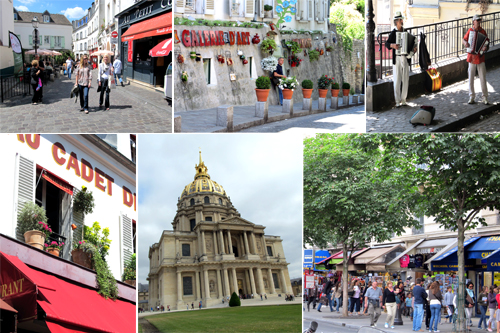
Of course, the big details were impressive as well.
When visiting the iconic Eiffel Tower, a cheesy picture is required.
We also spent some time in Notre Dame where it was nice to sit in peace away from the hustle and bustle of the city.
The Louvre was another historic place we visited. It was pretty amazing to stand mere feet away from the Mona Lisa. The painting was much smaller in person, though still captivating.
My favorite place we visited was one I had actually never heard of prior to being in Paris. We took the metro out to Montmartre and climbed the hundreds of steps up to Sacre Coeur, the “Basilica of the Sacred Heart.” This basilica is located on the highest point in Paris. Needless to say, the view was amazing.
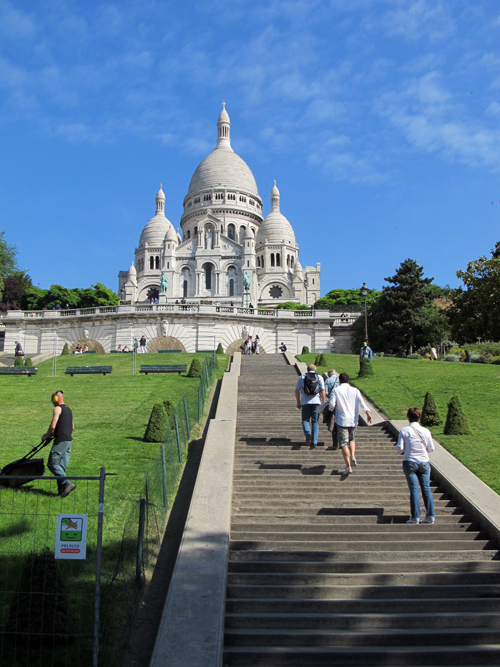
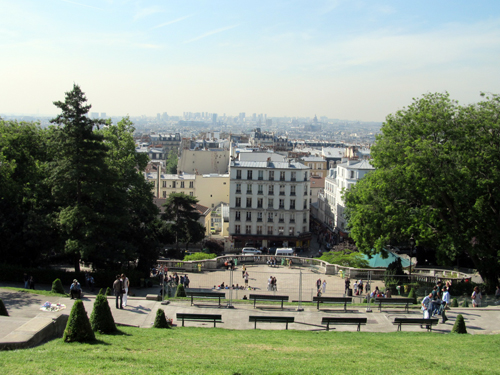
Sacre Coeur is simply beautiful, with its white travertine domes set against the blue sky. We took advantage of the view and sat on the steps to people watch.
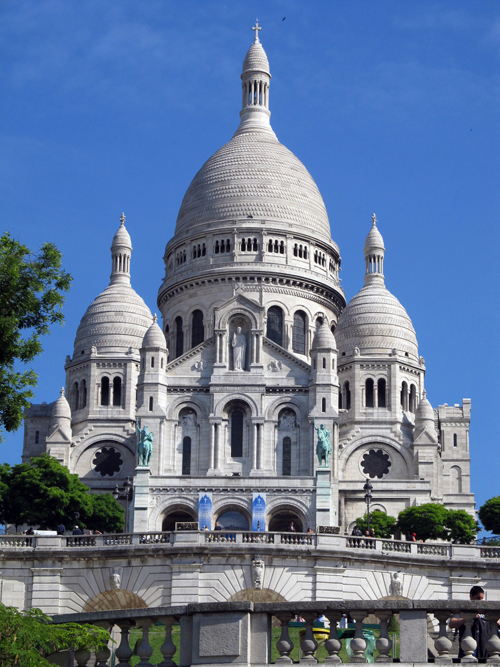
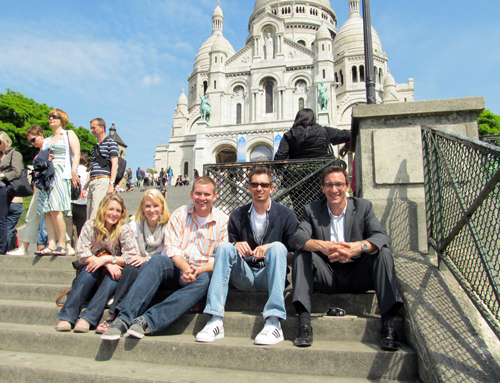
When we weren’t contemplating the significance of being in such a historical place, we were spending Euros on pictures with a fake statue.
One of our final destinations was to the Arc de Triomphe, another iconic place in Paris. We again climbed hundreds of steps up to the very top, where we had a breathtaking view of the city.
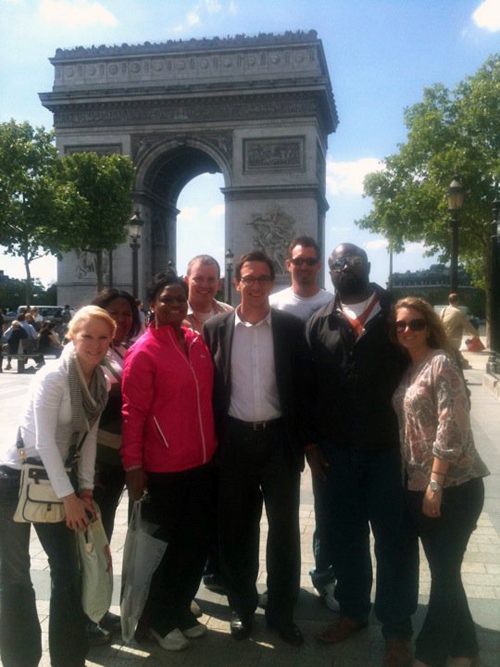
It was amazing to look around and see all the places we had been that week. Everywhere I looked was a memory.
Clockwise from top: The Eiffel Tower, Sacre Coeur, and the Champs-Elysees
I hope that if you have the opportunity to visit Paris, you’ll jump at the chance and make rich memories as I did. Traveling abroad as a student was something I will never forget, and I’m grateful the Department of Speech Communication offered this class. I try to tell everyone I know to visit Paris at least once in his or her life. As Audrey Hepburn said in Sabrina, “Paris is always a good idea.”
The Summer IV term is July 5 – August 8.
There’s still time to get one more course in before the end of summer.
Now’s your opportunity to take an interesting elective or accelerate your graduation timeline.

Learn more…
Class Schedule
Getting Advised
Summer Pocket Guide
Chart your course
Start by viewing a current listing of courses offered during Summer 2011.
You can also use the “Class Schedule at Your Fingertips” to simplify your selection.
Plan Ahead
All undergraduate students (except temporary, transient, provisional, and post-baccalaureate) must be advised before they can register for classes. For those new to the process, learn about advising here. There is also advising information for transfer students as well as advising information for continuing students.
Summer Financial Aid
Learn about how to apply for summer financial aid, and get information about important dates and deadlines for summer aid by visiting the Summer Financial Aid page.
For additional assistance contact the UALR Office of Records & Registration at 501.569.3110.
The following is courtesy of guest contributor, Eileen Turan, adjunct faculty member in the Department of Art and Donaghey Scholars program administrator.
When Allan Benson, the Young Adult Programmer at Fletcher Library, requested volunteers for their Summer Reading Group, I was excited to participate on behalf of UALR’s art department. Infamous street artist Banksy was the inspiration for a stencil project open to all ages.
About a dozen children, teenagers, and young adults participated in the afternoon stencil art session. First, each person posed in front of a large sheet of paper. Using a projector, we traced their shadows onto the paper, then we cut them out to make a life-size stencil. Once the stencil was made, the participants took the paper outside and affixed it to the building, sidewalk, or parking lot of the library. Using temporary washable spray-chalk and their stencils, they created silhouettes of themselves in bright colors and various creative poses.
The activity encouraged participants to realize that art is not confined to a canvas on the wall in a museum. By incorporating their own image, they felt as though they were really a vital part of the project. Like Banksy and other street artists, they made an art that was accessible to all people because it is part of the environment.
The most rewarding part of this experience was the enthusiasm of the children who took great pride in their projects. They were excited to pose for pictures and requested to keep their life-size cutouts. They also eagerly helped one another, getting spray chalk on their hands, feet, hair, and clothes! I applaud the library for supporting creative programming that challenges kids to think (and spray!) outside the box.
A few weeks ago, I had the opportunity to travel abroad as part of the Department of Speech Communication’s “Researching Lived Experience” class. I’m halfway through the applied communications master’s program and was thrilled the department offered this class to students.
The Office of International Services and the programs abroad department helped plan the trip, and Dr. Julien Mirivel led our group of seven students to Paris for a week in May. Once in the City of Light, we immersed ourselves in the culture and learned about interpersonal communication and phenomenology, a perspective focused on interpreting the meaning behind an experience. But you probably don’t want to read about methodological perspectives, so let’s skip that and focus on the good stuff!
First off, the French sure know how to cook. The food was beyond amazing, and these pictures will simply fail to convey the deliciousness. I made sure to try different things and step out of my comfort zone. No hamburgers or turkey sandwiches for this girl!
This is what I ate and drank every single morning:
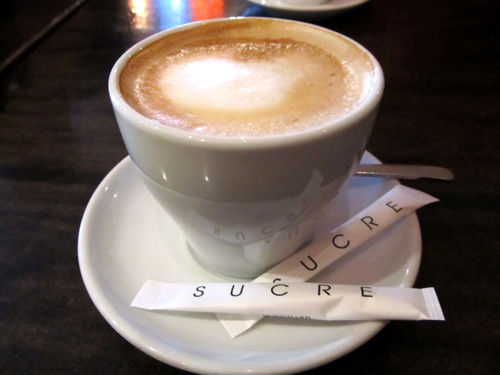
A scrumptious montage of some of our lunches, dinners, and desserts:
Are you sufficiently hungry yet?
But it really wasn’t just the food that was incredible; it was the entire dining experience. Here at home, meals are typically hurried through. Sometimes it feels like a race to the finish line, and if a waiter doesn’t immediately bring us our ticket at the end, we get a little frustrated. At least I know I do. In Paris, however, a meal is not something to be rushed. Meals are about spending time talking with people and truly savoring the food. A dinner typically lasts two to four hours.
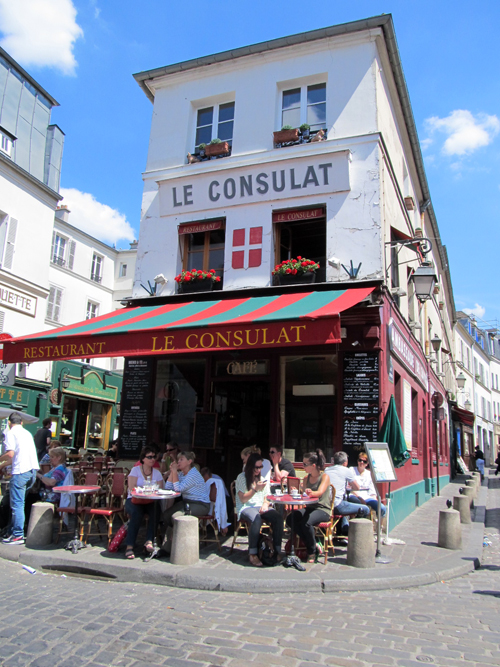
At first, this was a little hard for us American students to do. After an hour and a half, we were tapping our foot or drumming our fingers on the table wondering why the waitress hadn’t brought us our ticket. We had to remember this was Paris. It was okay to just sit and talk, even if our plate was empty and our stomach was full.
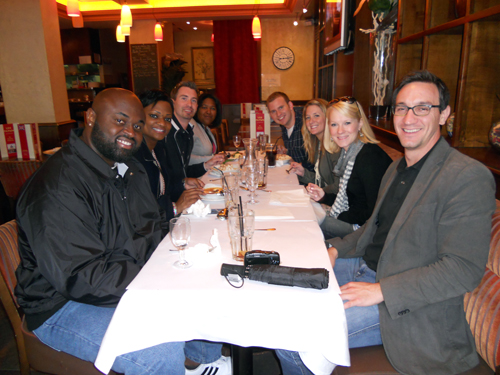
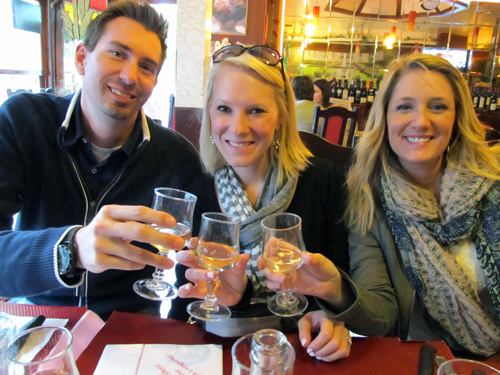
Going to a restaurant wasn’t simply a place to fill up on food — but a place to fill up on conversation. It didn’t take long for us to adapt to this aspect of French culture. Soon we were enjoying the lengthy meals and were happy to know a waitress wasn’t waiting for us to get up and leave.
These were the times we really got to know each other. It was there, sitting at the little tiled tables eating crepes, that I formed friendships I know I’ll keep for a very long time. It was a chance for us to laugh and share stories and talk about the amazing places we had been that day.
This is one aspect of French culture I hope to carry over into my American world. I hope I can remind those around me it’s important to savor the moment and not just the food.
Stay tuned for part two and see some of the incredible places we visited.
As a graphic designer for the past 13 years, I have had the pleasure of working on a variety of creative projects. I’ve never been a part of designing a Central Arkansas Transit Authority city bus, however. And, for such an historic event!
When my co-workers told me I’d be responsible for the artwork regarding the 50th Anniversary Freedom Riders Celebration in Little Rock, I hadn’t heard of the Freedom Riders and began Googling “1961 Freedom Riders” to learn all I could to capture the feeling, mood, tone, and emotion these courageous young people faced. If you are unfamiliar with the Freedom Rides, you can watch the PBS documentary to learn more.
Little did I realize how much detail and thought would go into planning a 35 x 10-foot design to wrap a bus. It was challenging and frustrating. I tried to capture the drama of this time in the Civil Rights movement through the harsh black and white color palette with the dash of red to represent bloodshed, while at the same time I had to be aware of details like where a window frame or an air vent was placed on the bus so that the art would work. I think you’ll be pleased with the outcome below and find it representative of the real people pictured on the bus who came to Little Rock in 1961 to make sure everyone had equal rights, even in a bus terminal.
For more information on the UALR Freedom Riders event, visit LRfreedomriders.org.
Above: The employees of Target Wraps in Sherwood work busily to complete the bus wrap for our UALR Freedom Riders Event taking place Sunday, July 10.
Top left to right: Samantha Blakley & Paul Schneider pull apart the printed panel to place on the front of the bus. Then they stretch & line up the panel to fit.
Bottom: Nick Nesterenko trims away the access paper and cuts in the grooves allowing for the vents, lights, etc. to be revealed. Samantha does the same for the door of the bus. And Paul cuts around the windshield wiper. Once the panels are cut away from the windows and doors a different paper is printed, with the same image, which is then applied in the same manner as the first paper. This second panel allows one to see through it while driving, or while sitting on the bus.
Wrapping a bus isn’t easy; it’s a long and tedious process (these folks just make it look easy).
Top left to right: Nick smooths out the panel with a sponge-like tool to release air bubbles. Working steadily, he places the next panel and repeats the process until the entire bus is complete. There is a paper backing that is peeled away as he works to lay the entire panel.
Bottom: Paul Schneider with owner Van Blakley and his wife, Samantha Blakley, pose in front of the fantastic job they did on wrapping this bus. Thank you Target Wraps! It was a pleasure working with you!
Top left to right: “Tada!” There I am excited to see the bus design come to life! Kim Fox, Angela Parker, and I pose in front of Annie Lumpkin and Janet Reinitz, two of the 1961 Freedom Riders who were arrested in Little Rock. Angela explains to Samantha what the Freedom Rides were all about.
Chancellor Anderson unveiled the design at the Central Arkansas Transit Authority terminal before the bus rolled into rotation around Little Rock last week. Read about the ribbon-cutting ceremony and view more photos of the bus.






